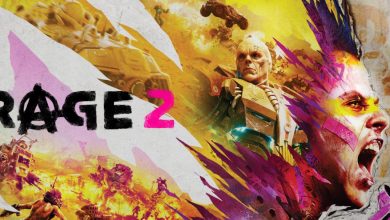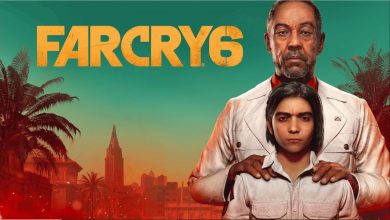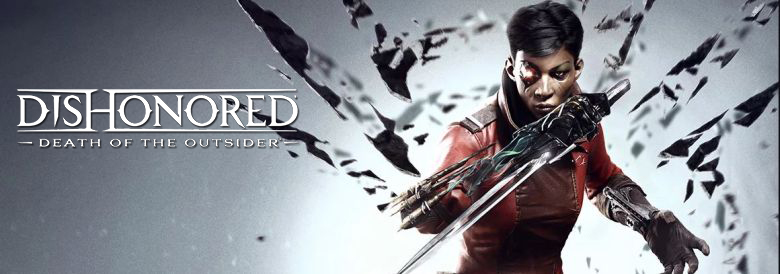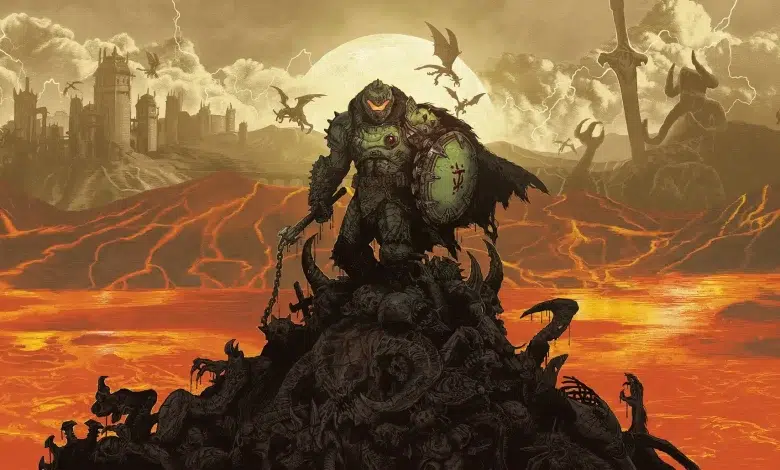
Macho-ism and havoc. Those are the two words I would choose to describe DOOM's return, back in the distant - almost a decade - 2016. Starting in the middle of the Slayer storyline, DOOM (2016) was id Software's "mindless fun" response to Machinegames' more scripted Wolfenstein: The New Order, both released under the Bethesda umbrella. Outrageous run-and-gun gunplay, over-the-top set pieces that brought back memories of the 80s where action heroes only had to be angry enough and a solution would be found. DOOM Eternal's sequel brought significant changes to player interactivity, but the storyline still evolved, through the Codex pages we found, and fit into the larger DOOM lore. DOOM: The Dark Ages (TDA) takes two steps back and delivers the 2016 prequel, with major alterations in all aspects. Let's take a look at how and why.
TDA deals with events just before all the lore covered in Eternal where the origin of Slayer unfolded. For those who paid attention to the Codex entries, it's about the Doomguy of the first two classic DOOMs, who ended up on the advanced alien race of Argenta and their planet, Argent D'Nur. After repeated duels and experimentation, Slayer is now an angry m'fer who is systematically brainwashed by another alien race, the Maykr, into remembering nothing but his anger. The plot of Dark Ages is set before the Unholy Crusade and the final betrayal of the Night Sentinels (the elite warriors) by the High Priests, when they try to defend themselves against the hordes of Hell.
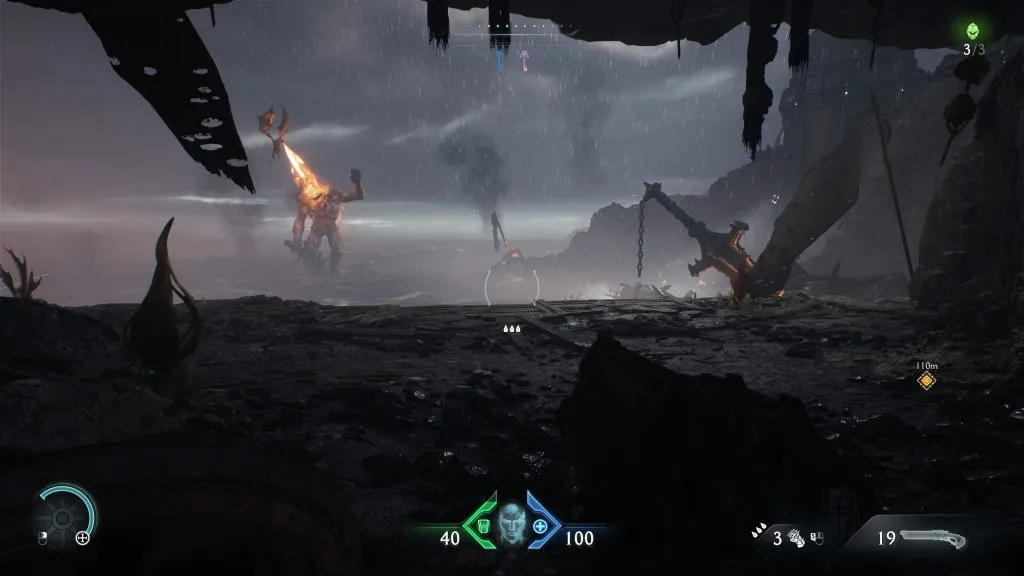
Adopting a completely cinematic approach, cutscenes and all, TDA takes us through 22 levels to present its entire story. The number of missions is misleading, because their duration varies dramatically depending on the mission, with some being satisfyingly long (as we saw in Eternal's Super Gore Nest, for example), while others serve the role of tutorial. Overall on the Nightmare difficulty level, I managed to get the coveted 100% (secrets, upgrades, achievements) in around 20 hours, about the same amount of time it took me for Doom Eternal - a fairly short duration for the price. However, the campaign is rife with majestic macho over-the-top sequences, where the Slayer seems to be a force of nature and more. The introduction of elements such as battles with Atlans and Titans may be borderline gimmicky, but it breaks the monotony a bit. At the same time we have flights with the mecha dragon that beyond the first "wow" moment ends up being more of a reflex game than anything substantial. But it's still an experimentation and a sign that id Software isn't afraid to try new recipes.
This experimentation also leads to the broader feeling one gets from the gameplay, as Dark Ages still follows the "show, don't tell" mantra. The Slayer seems to be a walking fortress against the hordes of hell, so every step he takes is purposeful and purposeful. Adopting a goth-sci-fi aesthetic, TDA transforms us from a slick, speedy meat grinder into a slow tank, arming us with shields and melee weapons. As you can see, the gameplay has once again been radically changed by combining elements from DOOM 2016 and Eternal. While the former had a run-and-gun, the latter complicated things to the point where we ended up playing piano on the keyboard to cope with its rock-paper-scissors gameplay, both in terms of resource management (armour, health, ammo) and gun counters for each enemy.
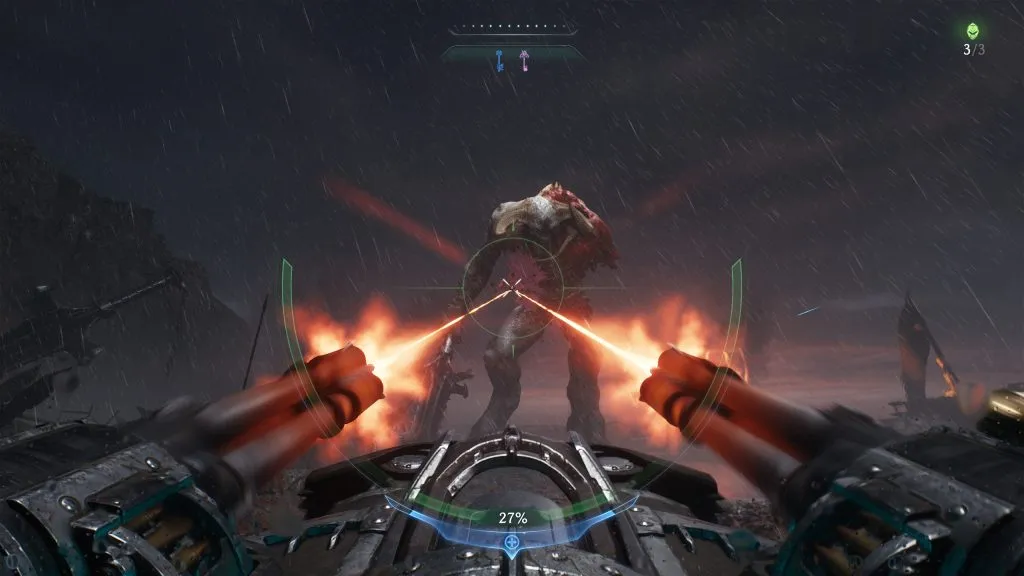
Dark Ages seems to take a middle path to the arsenal through simplification. There are no longer seven different weapons with two different modifications each (Eternal), but 11 (5 pairs with shared ammo + one separate). To those are added melee weapons and the shield. The gunplay is noticeably smoother than the chaos of Eternal, but this directly depends on the approach to the game, as most of the time we find ourselves defending with the shield (especially in situations with lots of ranged enemies). The gameplay has changed and from being highly aggressive, we end up having a more reactive role against what enemies throw at us. While the shield and weapon synergies have been worked on to the point where there are deep builds (personal favorite being the pincushion + Shredder that melts everything), the main way is to react to what enemies are doing first and then take initiative. This noticeable removal of player agency detracts quite a bit from the Slayer being an unstoppable m'fer who just pushes through violence, like we saw in the previous two games. The gameplay is therefore highly contradictory to what takes place in, for example, the cinematics where the Slayer literally takes on demons and more, elevating his status even further in the gaming pantheon.
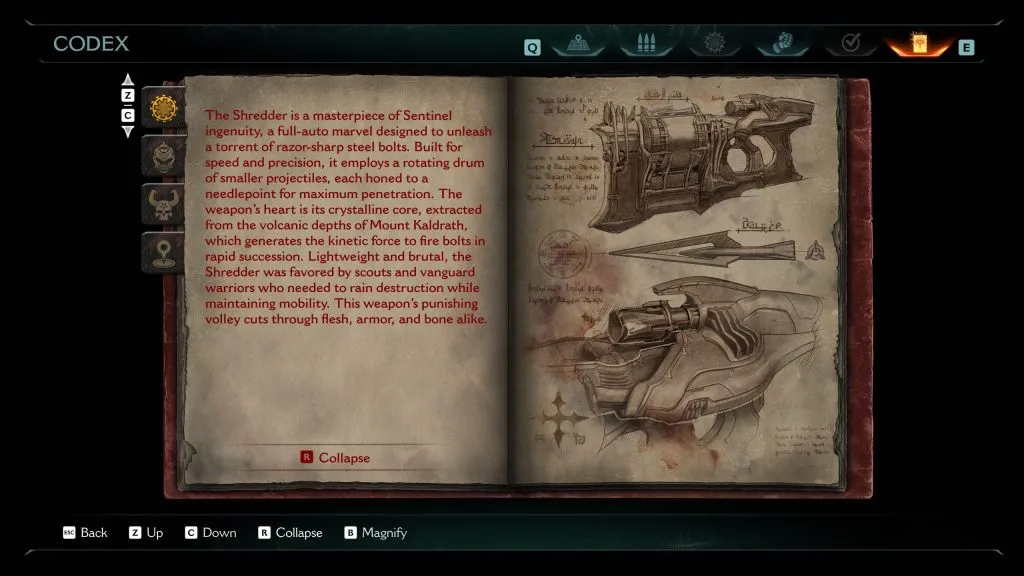
Focusing a bit more on the shield and melee section, I can say that my initial excitement was again limited to the gameplay loop and how I used it as a counter on 2-3 occasions. First, it helps to close in on enemies as an "offensive" approach, secondly throwing it towards fodder or larger enemies for combo builds, thirdly (and perhaps most importantly) to absorb enemy projectiles and reflect them in some cases. The shield therefore holds a primary role in gameplay, but seems to just replace the flame belch, chainsaw (and secondary mode of the super-shotgun). The melee weapons (punches, flail, and dreadmace) add customization depending on tastes with different synergies. A personal favorite remains that of the headshots with the impaler that fills the deadly dreadmace too quickly. Collateral damage is the noticeable disappearance of glory kills - they only exist against elite monsters and if you somehow magically manage to perform a jump attack on a staggered enemy. In summary, while I largely enjoyed the gameplay loop, the lack of "mobility" on Slayer's part was very noticeable, particularly the double jump and dodge that I would expect from a true old-school-like shooter.
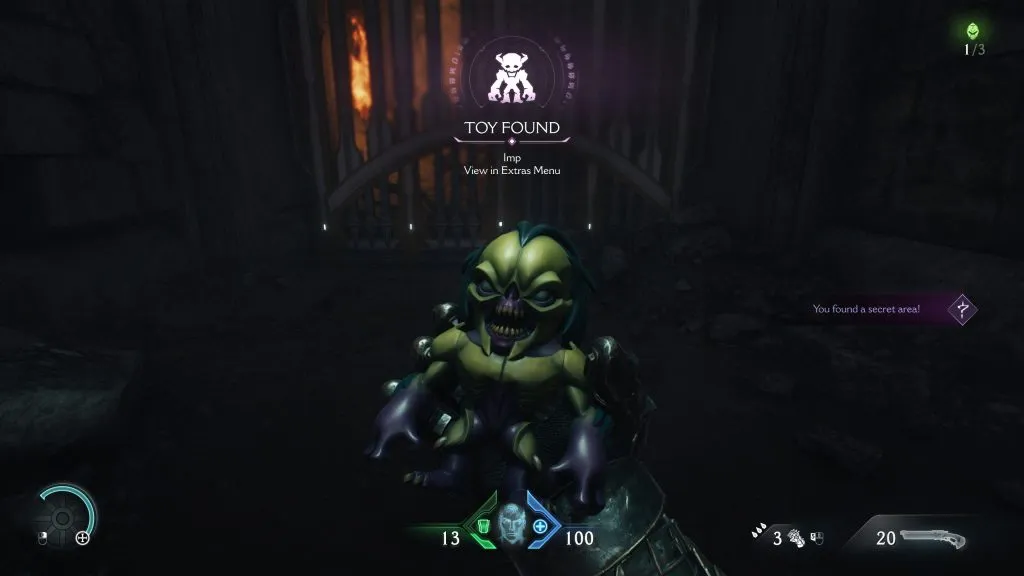
Another point that I realized as my involvement with The Dark Ages progressed is how much it lacks the music that gave the pulse to 2016 and Eternal. There is an axiom of experimentation in Genetics that can be extended to other aspects of life: if you want to see how important an element is, eliminate it and evaluate the effects. Such is the case here, as Mick Gordon's musical score is noticeably absent from the entire game. For those who have been following behind the scenes, there have been significant developments during the development of Eternal with the soundtrack coming out technically altered and Gordon himself, being forced to provide his own perspective (after legal approval) in a blog post. Regardless of what happened, the music doesn't even have a secondary role, being a very quiet background even when heavy guitar riffs are introduced, which contributes to the overall moderate gameplay aesthetic of the game compared to Eternal.
Εξετάζοντας περαιτέρω το τεχνικό κομμάτι δεν μπορεί κανείς να μην θαυμάσει τη δουλειά που έχει γίνει. Η id Software παραμένει στην αιχμή του δόρατος, με την idTech8 engine. Ήδη από το Indiana Jones and the Great Circle είδαμε ότι ζητούσε κατ’ ελάχιστο GPU με δυνατότητες ray tracing (RT). Το ίδιο συμβαίνει και εδώ με το TDA να έχει σχεδιαστεί εξαρχής με RT, χωρίς τη δυνατότητα απενεργοποίησης. Διαβάζοντας λίγο παραπάνω γύρω από αυτήν την απόφαση, και με ελάχιστες γνώσεις πάνω στο αντικείμενο, αντιλήφθηκα ότι αυτή η συνειδητή απόφαση βοήθησε σχεδιαστικά διότι το RT δεν χρησιμοποιείται απλά ως μία βελτιωμένη απεικόνιση γραφικών αλλά ως εργαλείο υπολογισμού των διαφόρων decals, ισχυρισμός που σηκώνει συζήτηση. Το αποτέλεσμα είναι ναι μεν το παιχνίδι να δείχνει φαντασμαγορικό, αλλά υπήρξαν τα εκάστοτε stutters (σε Ryzen 7700, Radeon RX 6800 XT, 32 GB RAM). Εκπτώσεις σε ρυθμίσεις και ενεργοποίηση του AMD FSR βοήθησαν αισθητά στην κατάσταση, χωρίς σημαντική επιδείνωση στην ποιότητα των γραφικών διατηρώντας παράλληλα την επιθυμητή χρυσή τομή των 60 fps. Προτρέπω τους αναγνώστες να έχουν υπόψιν ότι το RT είναι απαιτούμενο και να δουν αν μπορεί το σύστημά τους να το υποστηρίξει.
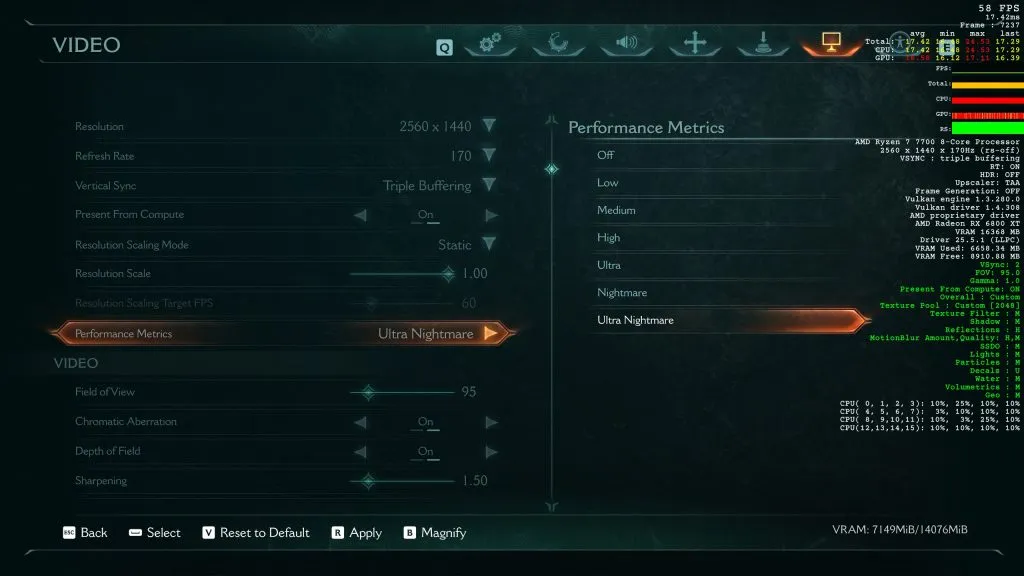
I hope from the list of key elements that you can understand how much of a mixed experience I had with The Dark Ages. Really for every change I could find both a positive and a setback, an indication perhaps of my expectations but also of the changed formula. The Dark Ages balances between the frenzy of DOOM 2016 and the more strategic gunplay of Eternal. It delivers a cinematic experience with in-game cutscenes and a script that builds towards the events we read about in Eternal's Codex. At the same time it delivers epic cutscene pieces with the Slayer being literally unstoppable at any obstacle, as long as it's not projectiles from every bitter hellspawn so he should have his shield at hand. A "full" experience but perhaps not justifying its high price for the length it promises casual fans of the series. Support with additional modes and DLC is a given, so you may have to wait until it's a more complete proposal.
We would like to thank ave.gr for the kind sponsorship of the code on which this review was based.
Doom or gloom?
RATING - 82%
82%
Honest
DOOM: The Dark Ages offers a solid prequel of the Slayer saga, while being bold and experimental. However, this experimentation strays away from DOOM 2016's formula, which may alienate FPS-purists even more than Eternal did.
